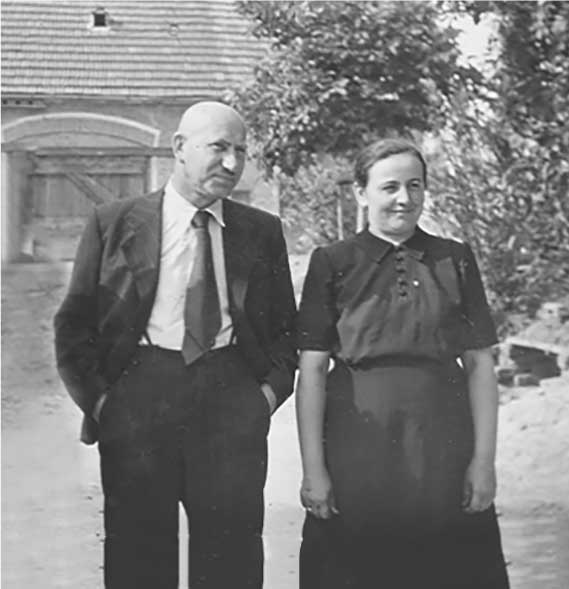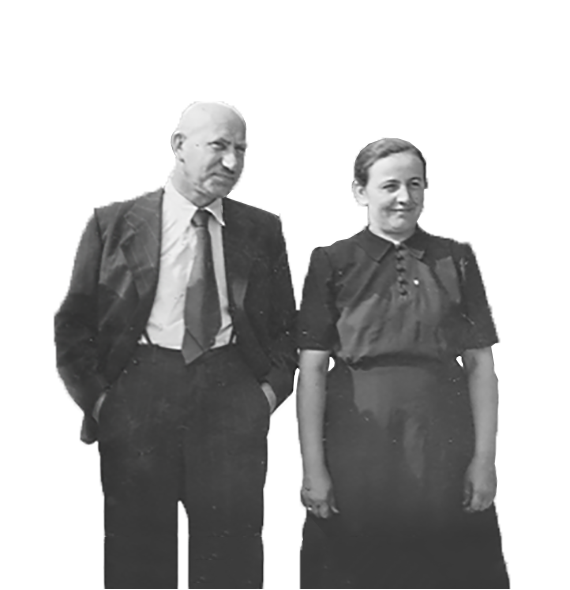My grandfather, Pista, bought a fancy new Nettar Anastigmat. This German camera cost the equivalent of one-half of a Marcali teacher’s monthly salary (100 pengő), and was a luxury for a farmer. Pista proudly documented his family and the thriving family farm.
















Pista and Gizi bought a DKW! Also made in Germany and pitched to the increasingly prosperous middle class customer, the lovely cherry-colored car was paid for with the sale of eighteen meat calves, to Italians. It cost 3500 pengő—what a Marcali teacher would earn in a year and a half.

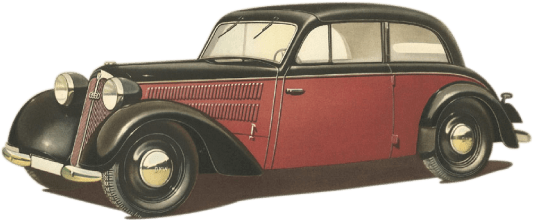

The family could now take trips to Héviz, the Balaton, and all around Marcali; there were only ten cars in Marcali at the time, and Pista proudly drove one of them.
Pista and Gizi sent their children to boarding schools in Keszthely, the nearest “big” town—about 30 kilometers to the north.



By sending their daughter to a convent school and their son to a Catholic gimnázium (what they call high schools in Hungary), Pista and Gizi were imitating Hungary’s aristocracy, and clearly differentiating themselves from the other peasants in Marcali. Boarding school meant status, pride, and a better education. Pista made a special trip to Kaposvár in the DKW to get Gyula eyeglasses for school.



It was forbidden to look out the window. The girls were required to eat all their meals in silence. If they found a worm in their milk, they had to drink it anyway.
The nuns were notoriously mean. All letters were censored going in and out. And the girls were only allowed a short walk twice a week (during which talking was forbidden!), to the dead nuns’ graves in the cemetery. Once a week each student received a lollipop, for which they had to curtsy and say “thank you, dear nun, for the lollipop.”

“I was a very vivacious child until the age of 10. I had a big mouth and I was very active. Once I got into the boarding school in Keszthely, I changed dramatically. My family barely believed it – after 3 months I became quiet and reserved, and I stayed like that.”
Gyula tried to cheer Ari up, but she doesn’t remember much family support. Their mother, Gizi, told Ari she was “selling vinegar” because of her pained expression. And so, Ari became stoic and serious, resolving that she would, from this point on, never cry. (She has kept her resolve to this day.)


Gyula hated the smelly washcloth passed around to each boy after meals (they ate at their desks; the rag was used to clean the desktops, and the smell lingered on his fingers). He also disdained the doctors’ and lawyers’ kids, who labeled him a country hick and pelted him with snowballs. He was an unhappy outsider in this oppressive Catholic school.
From Ari and Gyula’s point of view, their parents’ decision to send them to boarding schools to raise the family’s status was not working out as blissfully as planned.
ANDhere’s another decision that didn’t work out quite as planned: when the Hungarian government decided to collaborate with Germany to regain the lands it wanted so badly—another decision based on pride and status—it seemed like a smart move at the time. But the price of territory was a deeper relationship with Hitler.
This relationship only intensified when Hitler gave Hungary yet another chunk of territory, this time in Northern Transylvania, in September 1940. Northern Transylvania! The territory of so many proud Hungarian princes! The center of “true Hungarianness” (for some) and the bedrock of Hungarian nationalism!
Once again Horthy proudly led the Hungarian Army—with much pomp and circumstance—through Northern Transylvanian cities like Nagyvárad, which had belonged to Romania since 1918.




It took the Hungarian troops eight days to re-occupy Northern Transylvania.
This award of land, referred to as the “Second Vienna Award,” carried other stipulations, too. Hungarian politicians were now obliged to...
CONCEDEgovernment power to the Hungarian Arrow Cross — they were already the strongest opposition party in Hungary.
GIVEeconomic concessions to Germany — making the Hungarian economy wholly dependent on the Third Reich.
BEGINpreparations for the Third Anti-Jewish Law, which would prohibit intermarriage and penalize sexual intercourse between Jews and non-Jews. This law would pass in less than a year.
JOINthe Tripartite Pact between Germany, Italy, and Japan.

BYSeptember, 1940, Germany had already invaded Denmark, Norway, France, Holland, Belgium, Luxembourg, and half of Poland. The Soviet Union had already invaded Lithuania, Latvia, Estonia, part of Romania, and the other half of Poland. Eastern Europe was being carved up into German and Soviet spheres of occupation (with Germany getting the bulk).
It appeared at first that the war would bypass Hungary.
But after reluctantly joining the Tripartite Pact on November 20, 1940, Hungary (though not officially at war) was an official German ally.

1941
SOwhen Germany announced it wanted to pass through Hungary and invade Yugoslavia in March, 1941—just after Hungary signed a "Permanent Peace And Eternal Friendship" treaty with Yugoslavia—some Hungarian officials were quite torn.

“...THE YUGOSLAV NATION
WAS OUR FRIEND...
BUT NOW,
OUT OF COWARDICE
WE HAVE ALLIED OURSELVES
WITH SCOUNDRELS...”
- PÁL TELEKI
Horthy, who favored the invasion, appointed a new prime minister in Teleki’s place, and the tanks rolled on through.
The Hungarian government asked Hungarians to wave in support of the passing German troops. Pista and Gizi sent their children out instead. The siblings remember thousands of vehicles passing by their house as they rumbled south toward the Yugoslav border.
Although it wasn’t clear at the time, this was Hungary’s entry into World War II. This was the moment that would lead to dramatic changes all across Hungary, and certainly change the happy trajectory of my family’s social ascension.

On April 11, 1941, 80,000 Hungarian troops crossed the Yugoslav border in support of the German-led Axis invasion of Yugoslavia that had commenced five days earlier.
POORYugoslavia, the Germans bombed them through and through. For Hungary’s compliance, Hitler gave a final territorial gift: two pieces of Yugoslavia that had belonged to pre-Trianon Hungary:
Greater Hungary was on a path toward resurrection. Horthy and his succession of prime ministers were winning back Hungary’s land and pride. But at what cost?
After Hitler invaded the Soviet Union on June 22, 1941, Hungary would soon be asked to follow. In a shocking show of strength, Germany bombed Kiev.

“WE HAVE ONLY
TO KICK IN THE DOOR
AND THE WHOLE
ROTTEN STRUCTURE
WILL COME CRASHING DOWN!”
- ADOLF HITLER


THEinvasion of the Soviet Union further radicalized Hitler’s Nazi regime, which began to systematically murder millions of Jews and Roma (often referred to as Gypsies), and anyone else they deemed worthless, to reconfigure Europe into a “racially pure” Aryan Empire. The complicity of many Hungarians in these horrendous crimes was astonishing.
Some of the earliest atrocities of World War II occurred in territories just reclaimed by Hungary: In August 1941, 16,000 “undocumented” Jews living in Hungary were deported to Kamenets-Podolski, Ukraine and murdered alongside 7,600 Ukranian Jews in just two days; in January 1942, Hungarian troops murdered thousands of Jews and Serbs in the recently-returned territory of Délvidék.
Hungarian anti-Semitism, and the idea of a racially pure Greater Hungary popularized by Gömbös in the 1920s, only increased during the war.

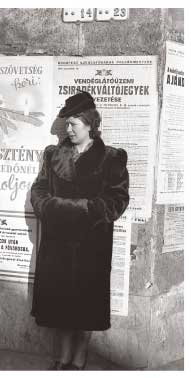

In August 1941 Hungary passed its Third Anti-Jewish Law, which prohibited sexual encounters between Christians and Jews.
Hungary’s government also conducted a formal census in 1941 to identify all Hungarians by nationality. This meant that families who had lived their entire lives in Hungary (but perhaps spoke German at home), had to decide if they were more German or more Hungarian ... Some members of a family wrote down “German,” while others wrote down “Hungarian.” This decision would have dire consequences in just a few years’ time...
Furthermore, every Hungarian citizen, including my family members and every person living in Marcali, had to file official papers proving they were not Jewish in order to retain their citizenship.

1942

NOWthat Hungary was committed to fight in Germany’s war, Horthy reluctantly mobilized 277,000 men to the Eastern Front in July 1942. Included were about 37,000 Jewish men forced into labor battalions.


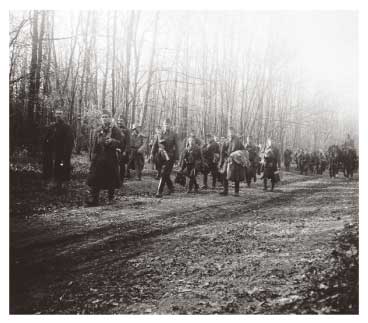
The mobilization was so badly calculated that soldiers had to walk 600 km to the front, which was along the Don River north of Stalingrad.
Arriving already exhausted, the Hungarians found obsolete anti-tank guns and pathetic amounts of ammunition. The high command had once again not prepared them for modern warfare, and the Germans naturally saved the best equipment for themselves. It felt like a repeat, in many ways, of what the Austro-Hungarian soldiers experienced during World War I.

1943

The winter came quickly; soldiers endured sub-zero conditions with inadequate clothing and the Germans ignored even the most minor requests. The Axis forces on the eastern front—which included Germans, Romanians, Italians, and Hungarians—had already collapsed by Christmas 1942.
When the Russians attacked on January 12, 1943, it was a disaster for the Hungarians (their worst defeat since Mohács in 1526), an epic loss for Germany, and a turning point in the war. Allying with Germany now seemed like a terrible idea.

MEANWHILE,the industrial-scale murder of Jews—using poison gas—was already underway. Unspeakable. Horror of horrors.
Meanwhile, the U.S. had just entered the war after Pearl Harbor, and roaring American bombers began to fly over Hungary. No bombs dropping yet ... but soon.
Meanwhile, Ari and Gyula were still at school, with Gyula’s “country hick” situation improving: in lieu of tuition Pista was now supplying both Keszthely schools with nice rich food from the family farm. However, it was impossible to think with bombers flying overhead.
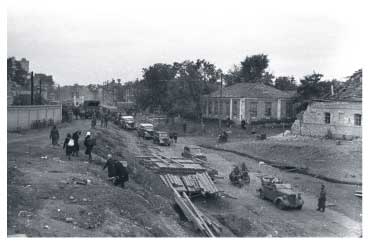
Throughout Europe, 1943 brought more war misery and incomprehensible, nightmarish deaths. As novelist Amos Oz put it,
“EUROPE, THAT WONDERFUL,
MURDEROUS CONTINENT.”
- AMOS OZ
This murderousness was unbelievable ... on a scale so much worse than any war before.
